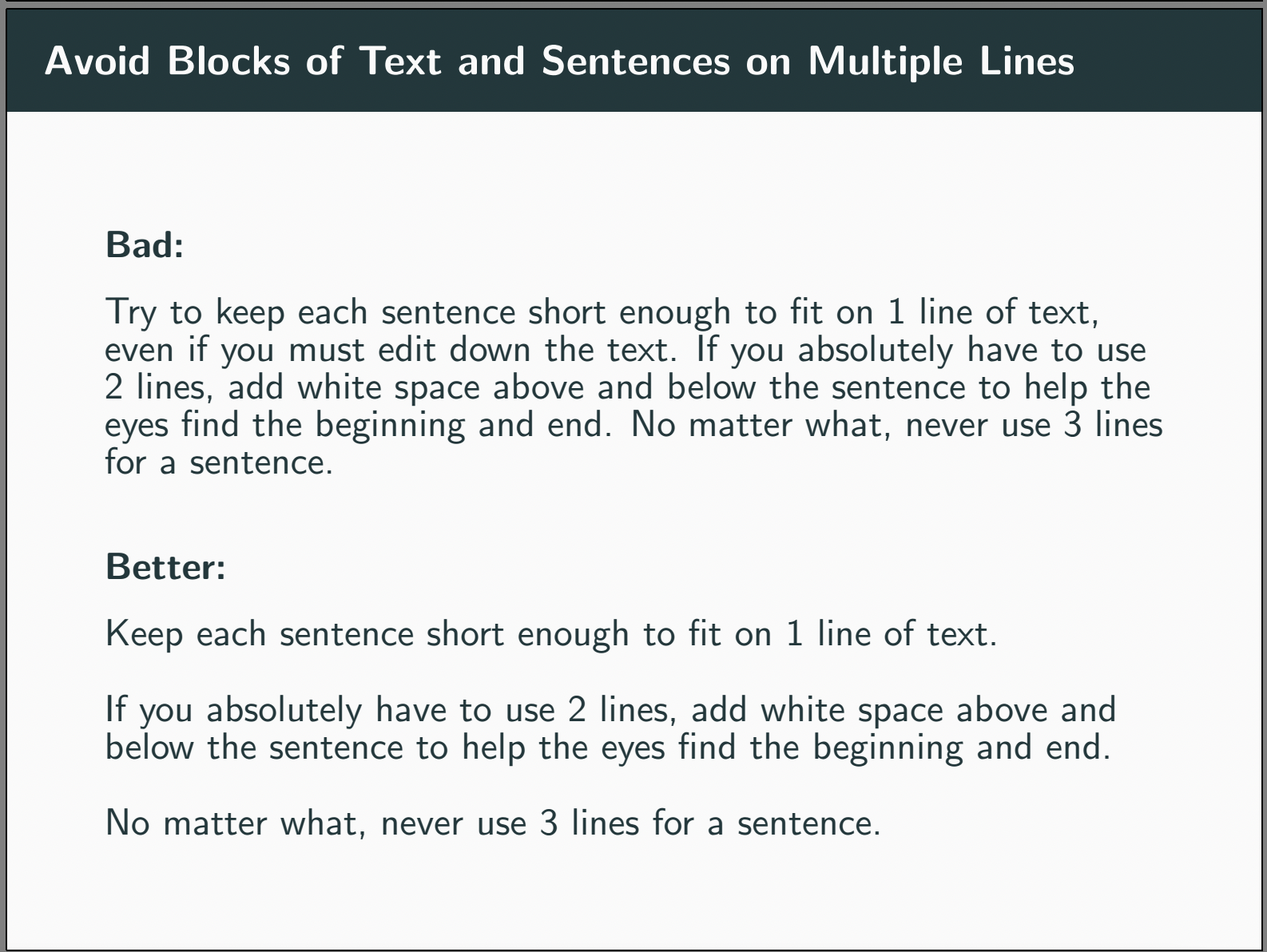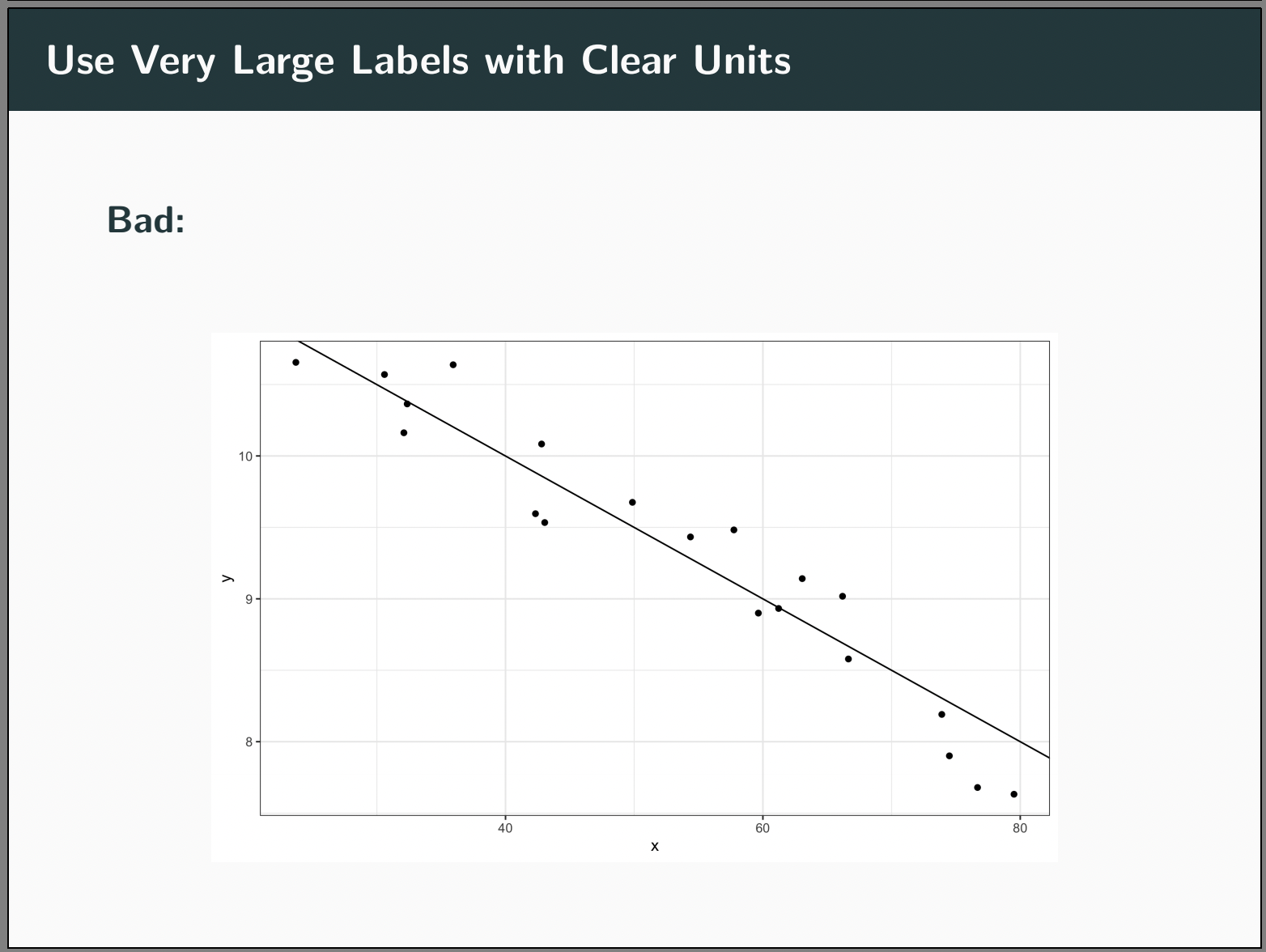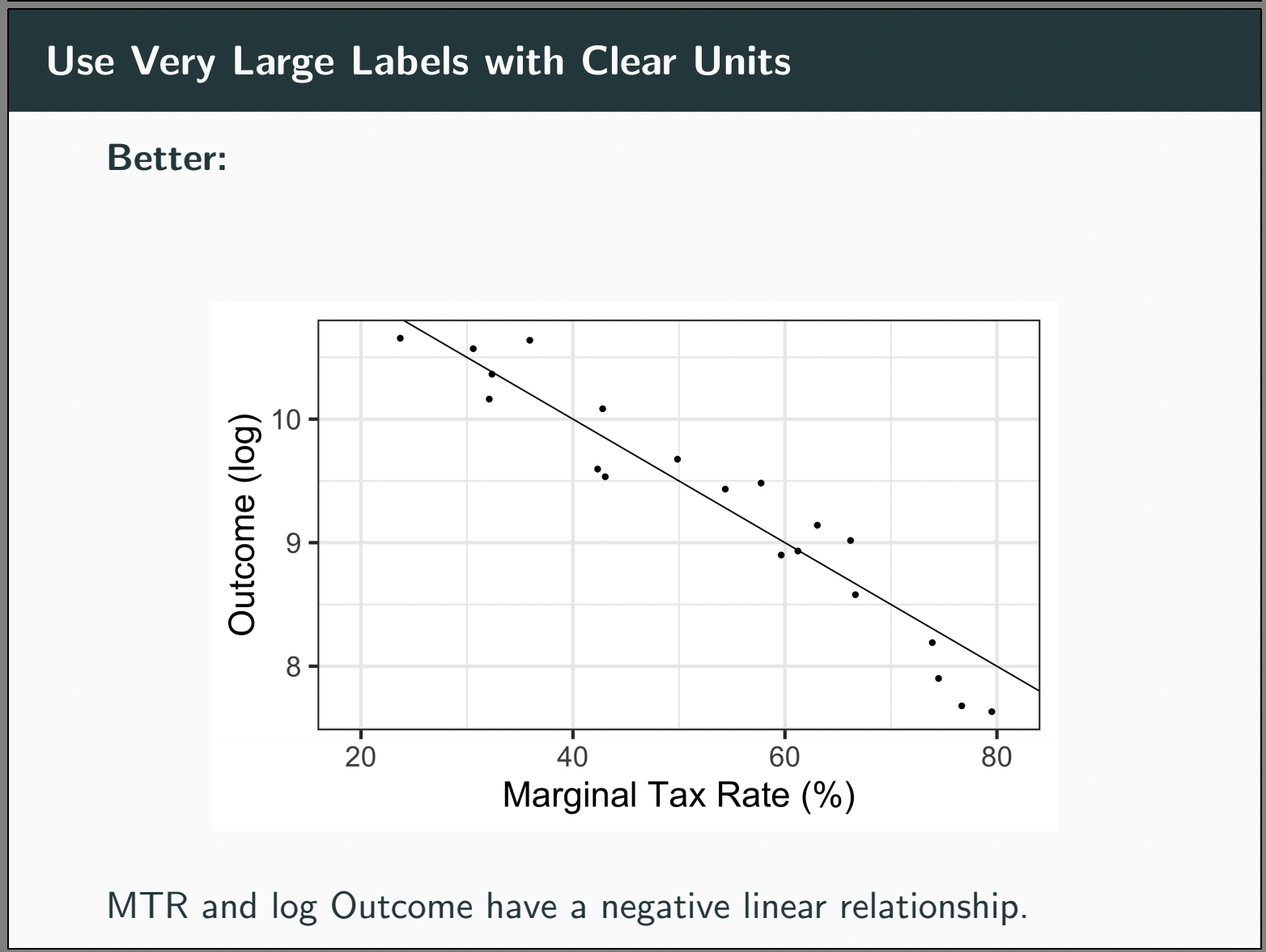Presentations
The following is advice for a hypothetical graduate student who is planning to present preliminary research in an academic environment.
Presentation slides
Here are a few general rules for formatting of presentation slides:
- Your questions of interest should be written explicitly on one of the first slides: The point of economic research is to answer important economic questions. Before describing your data, model, or results, it should be crystal clear to the audience what are the economic question you seek to answer during the presentation and why the answers to those questions matter.
- Avoid blocks of text and sentences on multiple lines: Try to keep each sentence short enough to fit on one line of text. This is because it is hard for the eyes to follow a sentence across multiple lines. If you must use 2 lines for a sentence, add white space above and below the sentence to help the eyes find the beginning and end. Never use 3 lines for a sentence.

- In plots, use very large labels with clear units and helpful tick marks: It is difficult to quickly understand a plot during a presentation. Help the audience by using overly large labels on the axes. Make sure the units of measurement are obvious. Place the tick marks on the axes to include major round numbers if possible.

- Always explicitly write the main takeaway on each results slide: If you show a plot or otherwise present results, you must state the main takeaway explicitly on the slide. If the point of your plot is that there is a linear relationship between the variables on the vertical and horizontal axes, write that explicitly underneath the plot.

Presenting a structural model
Here are a few rules specifically for presenting a structural model:
- Define symbols as soon as they appear: Any variables, parameters, subscripts, or other symbols must be defined on the first slide in which they appear.
- Use the fewest number of symbols possible and choose memorable symbols: Imagine being quickly shown 10 symbols, each with a distinct interpretation, then being tested on your memory of those symbols’ interpretations 5 minutes later. Could you score 100% on this memory test? Probably not. Your audience also cannot be expected to memorize the interpretations of 10 symbols on the fly. Help the audience by using a small number of symbols and choosing symbols with memorable interpretations, e.g., use W to denote the wage.
- Explicitly motivate the structural model: Presenting a structural model requires that the audience memorize not only a list of symbols but also various functional forms and how they interact with one another. This is quite taxing on the audience, so you must convince the audience that the model is strictly necessary before starting the model presentation. Give the audience a concrete example of a result that is interesting and requires the structural model.
- Functional forms should be justified: The audience needs to know why your model is a good one. It is the presenter’s job to convince the audience that the chosen structural equations are both realistic and useful. Make clear which features of the model are useful for economic insights (e.g. parameterizations that lead to helpful comparative statics) and which features are useful for representing the empirical environment (e.g. sources of unobserved heterogeneity).
Interacting with the audience
Here are a few rules for dealing with questions from the audience:
- Write down audience questions: The goal of presenting preliminary work is to receive feedback from the audience. It is unlikely the presenter will perfectly remember 20 questions and comments after the presentation. Either write down notes during the presentation or ask a friend to do so.
- Anticipate audience questions: Most questions asked by the audience during a presentation are predictable beforehand. Prepare by writing out clear and concise answers to any questions you expect to receive, even if doing so requires producing new results.
- Keep answers short and focused tightly on the question asked: Do not deviate to discuss other issues before answering the question posed by the audience. Remain focused and use as few words as possible. If the audience question has a “yes or no” structure, explicitly argue why “yes” or “no” is the correct answer.
- Answers to empirical questions should be available on a slide: Do not try to answer empirical questions off the top of your head. Any numbers quoted to the audience should be visible on a slide, perhaps in a plot or table.
- The best answer to some questions is “I don’t know”: If answering a question requires deriving new analytical results off the top of your head, or to provide an estimate that you do not have written in the slides, the best answer is often “I don’t know for sure, but I will check it after the talk and get back to you”.
- Do not provide meta commentary: You do not need to comment on the quality or timing of audience questions; just answer the questions.
- Take “bad” questions seriously: Every so often, an audience member asks a “bad” question, which is a question whose answer is obvious or irrelevant to the current presentation. Rather than dismissing such questions, learn from them. How could the presentation be improved to avoid confusion?
Additional advice:
Here are additional resources about presentations (repeating many of the points above):